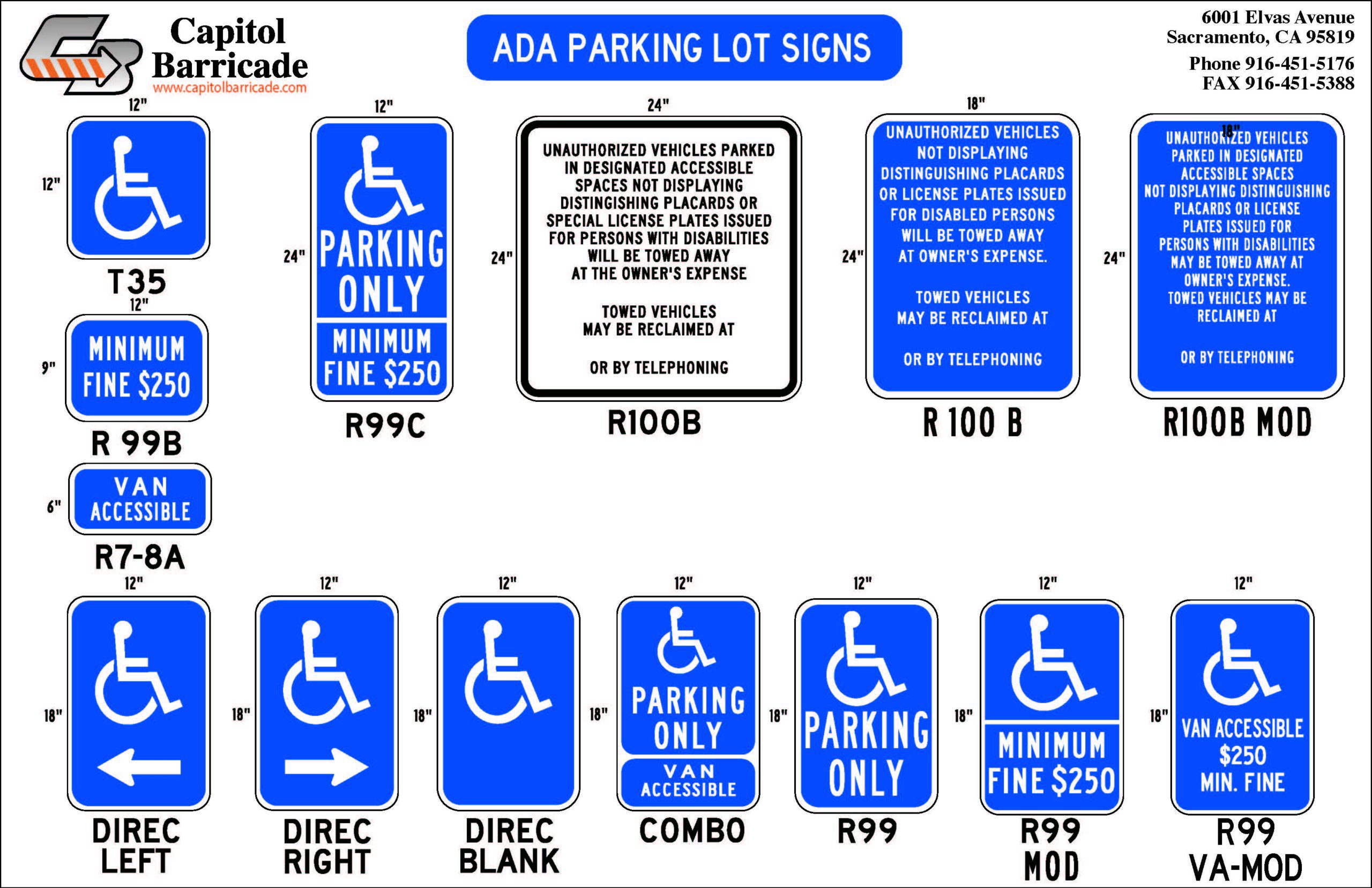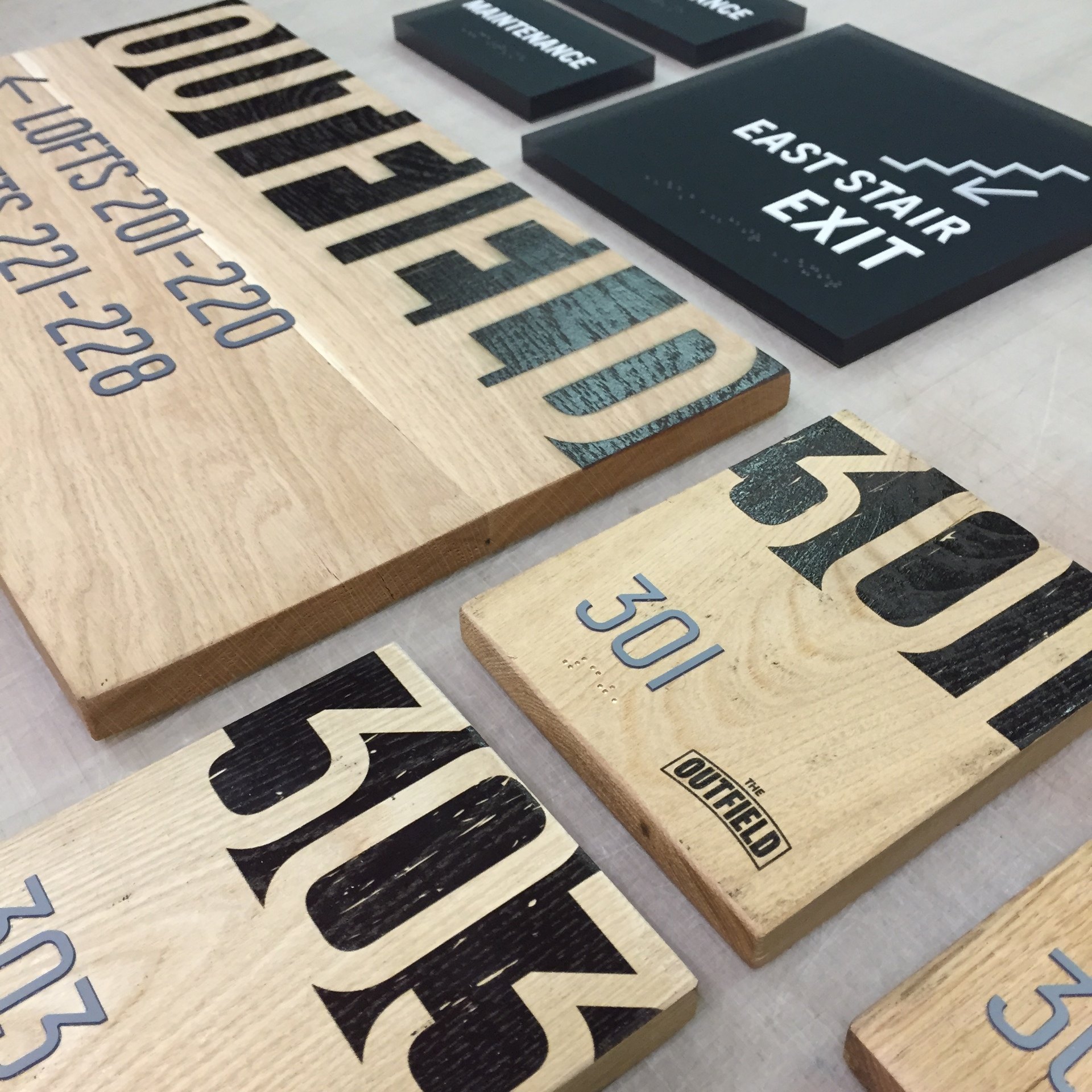Tailoring ADA Signs to Fulfill Your Certain Requirements
Tailoring ADA Signs to Fulfill Your Certain Requirements
Blog Article
Checking Out the Secret Functions of ADA Indications for Improved Availability
In the realm of access, ADA indications offer as silent yet powerful allies, making certain that spaces are accessible and inclusive for individuals with specials needs. By incorporating Braille and tactile aspects, these indicators break obstacles for the aesthetically impaired, while high-contrast color plans and legible font styles provide to diverse visual requirements.
Importance of ADA Compliance
Making sure conformity with the Americans with Disabilities Act (ADA) is vital for fostering inclusivity and equal gain access to in public rooms and workplaces. The ADA, enacted in 1990, mandates that all public facilities, companies, and transport services accommodate individuals with specials needs, guaranteeing they enjoy the exact same civil liberties and opportunities as others. Compliance with ADA standards not just satisfies lawful commitments but likewise enhances a company's reputation by demonstrating its commitment to diversity and inclusivity.
One of the essential elements of ADA compliance is the application of obtainable signs. ADA indicators are made to ensure that people with disabilities can easily browse via spaces and buildings. These signs should adhere to specific standards relating to dimension, font style, shade contrast, and positioning to ensure presence and readability for all. Correctly carried out ADA signage helps remove obstacles that individuals with specials needs typically run into, thus promoting their freedom and confidence (ADA Signs).
Moreover, adhering to ADA guidelines can minimize the risk of lawful repercussions and potential fines. Organizations that fall short to adhere to ADA standards may encounter legal actions or fines, which can be both financially challenging and damaging to their public picture. Hence, ADA compliance is integral to fostering an equitable setting for everybody.
Braille and Tactile Components
The unification of Braille and responsive components into ADA signage embodies the concepts of ease of access and inclusivity. It is commonly placed underneath the matching text on signs to ensure that individuals can access the information without visual assistance.
Tactile components prolong beyond Braille and consist of raised symbols and characters. These parts are designed to be noticeable by touch, allowing individuals to recognize room numbers, bathrooms, leaves, and various other crucial areas. The ADA establishes particular standards relating to the dimension, spacing, and positioning of these tactile components to optimize readability and make certain uniformity throughout different settings.

High-Contrast Color Pattern
High-contrast color plans play an essential duty in boosting the presence and readability of ADA signs for individuals with aesthetic problems. These systems are necessary as they maximize the distinction in light reflectance between message and history, ensuring that indicators are conveniently discernible, even from a range. The Americans with Disabilities Act (ADA) mandates making use of particular color contrasts to accommodate those with restricted vision, making it a critical aspect of conformity.
The efficiency of high-contrast colors depends on their ability to stand apart in various lights problems, consisting of poorly lit settings and locations with glow. Normally, dark message on a light history or light message on a dark background is employed to accomplish ideal contrast. For example, black text on a white or yellow background provides a stark aesthetic difference that assists in quick recognition and understanding.

Legible Fonts and Text Dimension
When taking into consideration the layout of ADA signs, the option of understandable font styles and appropriate message size can not be overemphasized. The Americans with Disabilities Act (ADA) mandates that fonts must be not italic and sans-serif, oblique, script, highly decorative, or of uncommon type.
The size of the message likewise plays an essential function in access. According to ADA guidelines, the minimal text elevation must be 5/8 inch, and it should increase proportionally with checking out range. This is specifically essential in public spaces where signage needs to be checked out swiftly and precisely. Consistency in text size adds to a natural aesthetic experience, assisting individuals in navigating atmospheres successfully.
In addition, spacing between lines and letters is essential to clarity. Adequate spacing protects against characters from appearing crowded, boosting readability. By adhering to these standards, developers can substantially enhance accessibility, ensuring that signage serves its intended objective for all individuals, despite their aesthetic capacities.
Effective Placement Approaches
Strategic placement of ADA signage is essential for maximizing accessibility and ensuring conformity with legal criteria. ADA guidelines specify that indications should be placed at an elevation in between 48 to 60 inches from the ground to ensure they are within the line of sight for both standing and seated individuals.
Furthermore, indications have to be placed adjacent to the lock side of visit this web-site doors to permit simple recognition prior to entrance. This positioning helps people find rooms and spaces without Learn More Here obstruction. In cases where there is no door, signs need to be positioned on the closest surrounding wall. Uniformity in indicator positioning throughout a facility improves predictability, minimizing confusion and boosting total individual experience.

Conclusion
ADA indicators play an essential duty in advertising ease of access by incorporating features that address the requirements of individuals with disabilities. These aspects collectively cultivate an inclusive setting, emphasizing the significance of ADA conformity in making sure equivalent access for all.
In the realm of accessibility, ADA indications offer as quiet yet effective allies, making certain that areas are navigable and inclusive for people with impairments. The ADA, established in 1990, mandates that all public facilities, employers, and transportation solutions fit people with handicaps, guaranteeing they take pleasure in the exact same civil liberties and possibilities as others. ADA Signs. ADA indicators are created to ensure that individuals with impairments can easily browse through spaces and buildings. ADA standards specify that indications should be installed at an elevation between 48 to 60 inches from the ground to guarantee they are within the line of view for both his comment is here standing and seated people.ADA indications play an important duty in promoting ease of access by incorporating features that deal with the needs of people with disabilities
Report this page